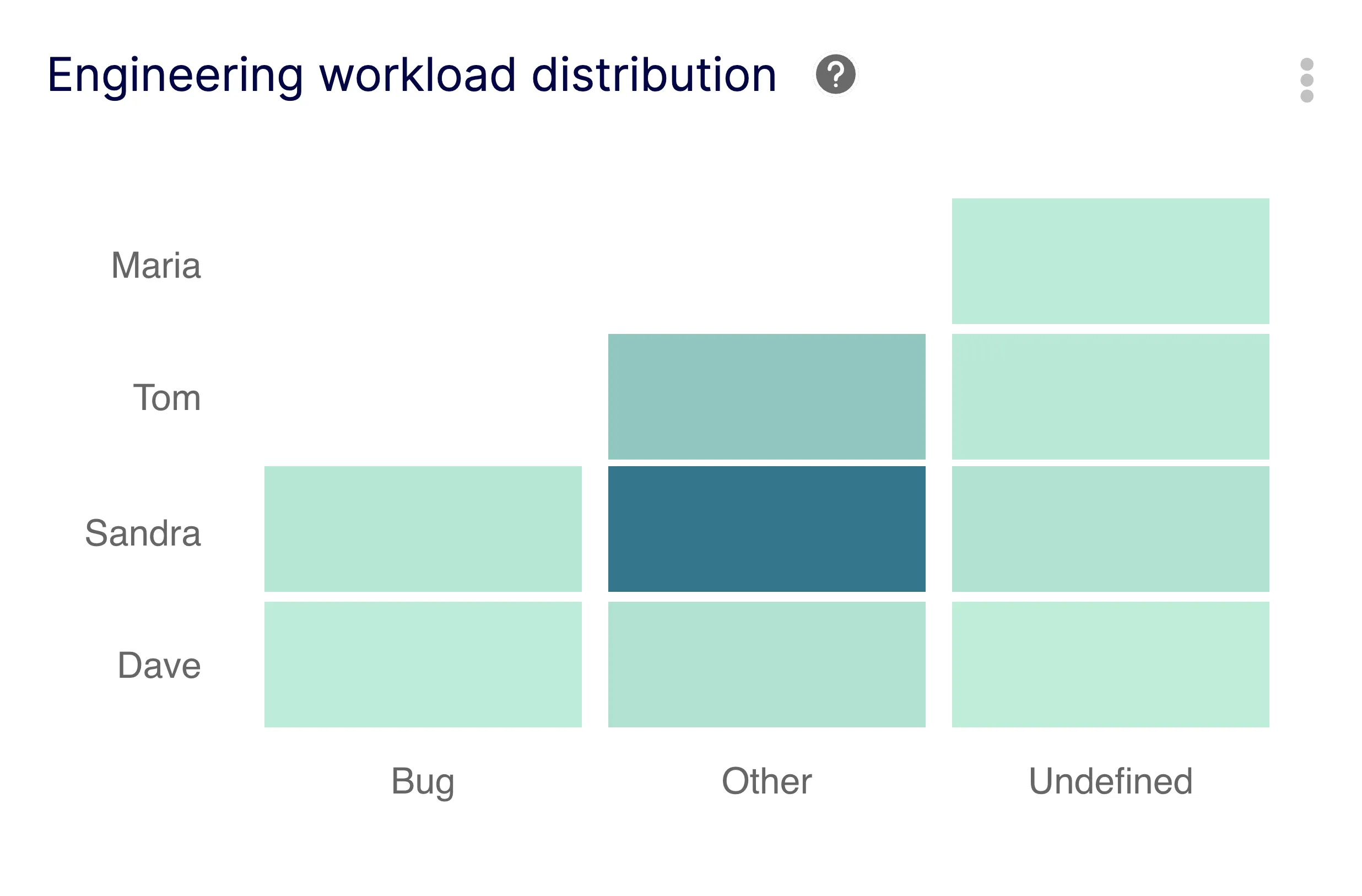Engineering Workload Distribution
The Engineering Workload Distribution metric measures the number of pull requests created per user and per label, providing insights into the types of tasks individual engineers have been working on. By identifying patterns of compartmentalization, you can ensure that engineers are not always working on the same tasks, improving their well-being and skills development.
Identify Developer Task Patterns
with the
Engineering Workload Distribution
The Engineering Workload Distribution metric measures the number of pull requests created per user and per label, providing insights into the types of tasks individual engineers have been working on. By identifying patterns of compartmentalization, you can ensure that engineers are not always working on the same tasks, improving their well-being and skills development.



From startups to large enterprises, Keypup serves all the unique complexities related to project size, structure and teams, including:



.webp)
.webp)

.webp)








%20(1).webp)
.webp)




.webp)

.webp)

%20logo.webp)








.webp)




















.webp)








%20(1).webp)
.webp)




.webp)

.webp)

%20logo.webp)








.webp)



















Optimize Engineering Workload for Improved Team Performance
By using the Engineering Workload Distribution metric, you can ensure that your team is well-balanced in terms of workload, leading to improved productivity, a healthier work culture, and ultimately better business outcomes.
Improve Engineering Workload Distribution
To optimize workload distribution and improve your engineers' well-being, consider the following:
- Evaluate the work distribution regularly: Keep track of the workload distribution and make sure that engineers are not working on the same type of tasks continuously.
- Encourage a rotation policy: Encourage a rotation policy where engineers work on different types of tasks, which will broaden their skill set and lead to more engaged employees.
- Implement cross-functional training: Ensure that all engineers receive cross-functional training to fill in the skill gaps. This will allow engineers to be more versatile in their work and handle different types of tasks.
- Promote collaboration: Encourage collaboration between engineers, which will help with knowledge sharing and allow the team to better distribute workload based on each engineer's strengths and experience.
By implementing these strategies, you can improve workload distribution, increase employee engagement, and optimize performance across the team.







